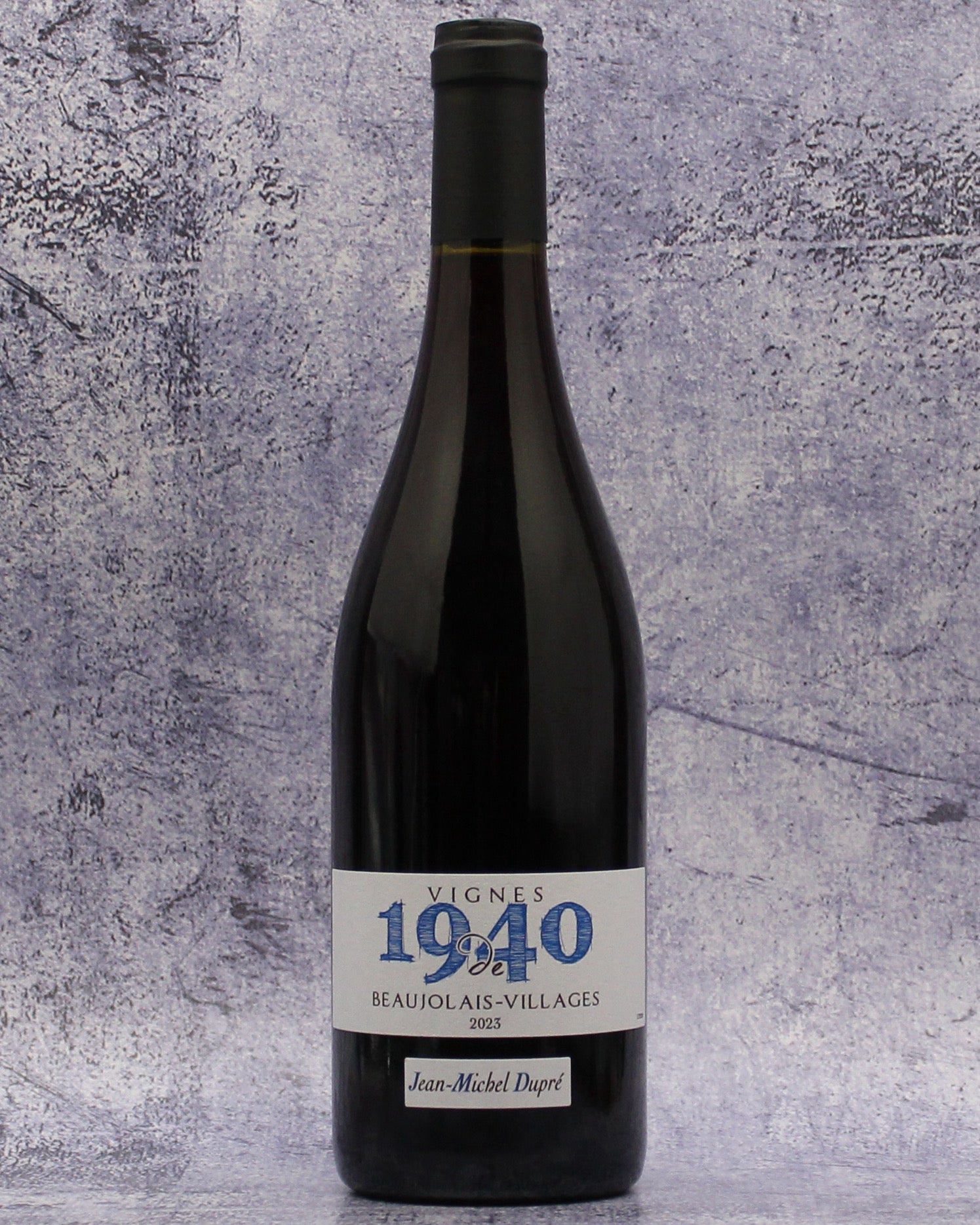Description
Region: Beaujolais Villages, France
Varietal: Gamay
Tasting Notes: Well-balanced red and black fruits and wonderfully soft mouthfeel. Fresh cut violet, brambly raspberry, wild blackberry and plum skin on the nose. A touch of savory, earthy notes meet a dusting of black pepper and calls for food and friends. On the palate, black current and crunchy cherry flavors brim with just the right amount of acidity that leads into a mineral, stony core and a lifted, dry finish.
Pairing: Beaujolais is almost always a winner with French charcuterie such as patés, terrines, rillettes and saucisson sec and with white-rinded cheeses such as Brie and Camembert (provided they’re not overripe) but it's a highly versatile wine that can easily take you through a meal where people are ordering different things. Toulouse or other garlicky sausages and lentils, fruity tagines like lamb tajine with dates, prunes or apricots, salads especially with chicken or bacon (think frisée with lardons) with pomegranate seeds, with berries like dried cherries or cranberries or with goats cheese, and of course simply grilled pork, lamb or veal. I suggest a simple lemon herb roasted chicken served alongside Yotam Ottolenghi’s Tomato and Pomegranate Salad
recipe from Yotam Ottolenghi and a glass of this beautiful Beaujolais Gamay!
About: Beaujolais Villages is the appellation for red, white and rosé wines from a zone made up of 38 villages in the north of Beaujolais. The hilly terrain and granite soil here is considered superior to that of the flatter lands in the south of Beaujolais. As a result, Beaujolais Villages wines are considered to be of a higher quality than those of the straight Beaujolais appellation.
These juicy, light bodied wines are based overwhelmingly on the Gamay grape variety. They display varietal characters of red fruit and spice. Most wines at this level are made using semi-carbonic maceration, known here as maceration traditionelle.
A small proportion of Chardonnay, Aligoté, Melon de Bourgogne, Pinot Gris or Pinot Noir is permitted in the blend. These grape varieties must make up no more than 15 percent of the total vineyard area.
Beaujolais Villages Blanc must be made entirely of Chardonnay. It is mostly produced in the very north of the Beaujolais region, where some limestone can still be found in the soils. However, as the appellation's borders overlap those of the southern Mâconnais, most white wines are labeled as the more familiar Mâcon-Villages.
The Beaujolais Villages appellation accounts for around a quarter of the Beaujolais region's total annual output. Most of this is red wine, with just small amounts of white and rosé wine produced.
The appellation law has slightly different rules surrounding vinification and permitted yields than the more generic Beaujolais appellation. This gives rise to a slightly fuller-bodied, more concentrated style of wine. Most Beaujolais Villages wines are made for immediate consumption. However, some of the best examples can be cellared for up to five years.
Most Beaujolais Villages wines are produced by negociants, and are made up of grapes that come from a number of the official villages. However, if the wine is made from grapes that come solely from one village, then that wine may have the village name appended to the Beaujolais Villages title. This of course does not apply to any of the cru appellation villages.
The official viticultural zone of Beaujolais Villages stretches from the southern end of Mâconnais to Villefranche-sur-Saône in the south. It lies in both the Rhône and Saône et Loire departments. The southern end of the Beaujolais Villages vineyard area marks where the hillier land of northern Beaujolais gives way to the flat plains of southern Beaujolais. It's here that the simpler Beaujolais and Beaujolais Nouveau wines are made.
The terroir of northern Beaujolais is, not surprisingly, considered to be a great partner for Gamay. Vineyards sit on the sunny south- and southeast-facing slopes on the hills to the west of the Saône River. Bright sunshine and dry, warming foehn winds help the grapes to reach optimal ripeness.
Here, the limestone soils of southern Burgundy give way to the granite and schist soils of the Massif Central mountain range. These coarse, sandy soils are considered superior to the more clay-dominated soils of southern Beaujolais. Their heat-retaining quality helps the vines to reach optimal ripeness. They are also highly permeable, allowing for excellent drainage in the vineyards.
Jean-Michel Dupre started with next to nothing: only a farm and a two hectare vineyard left by his father. When the question of succession arose, Jean-Michel could not pass on the opportunity to continue the tradition. He converted an old farm building into a winery and went in search of additional well-located plots in Beaujolais, Beaujolais Villages, Morgon, and Régnié. What sets him apart from many other winemakers in the region is the age of his vineyard, which has vines on it that are around 100 years old. His wines have an incredible concentration as a result from smaller yields and more expressive fruit. The vines that produce this wine average over seventy years of age and are located in the sandy granitic soils of the 11 acre "Tour Bardon" vineyard. This is a gorgeous wine to sip slightly chilled on a summer evening.

